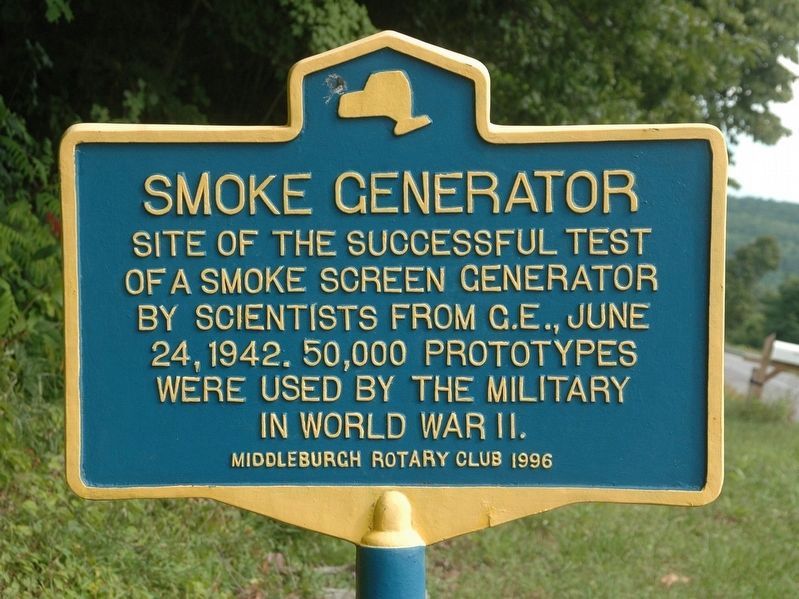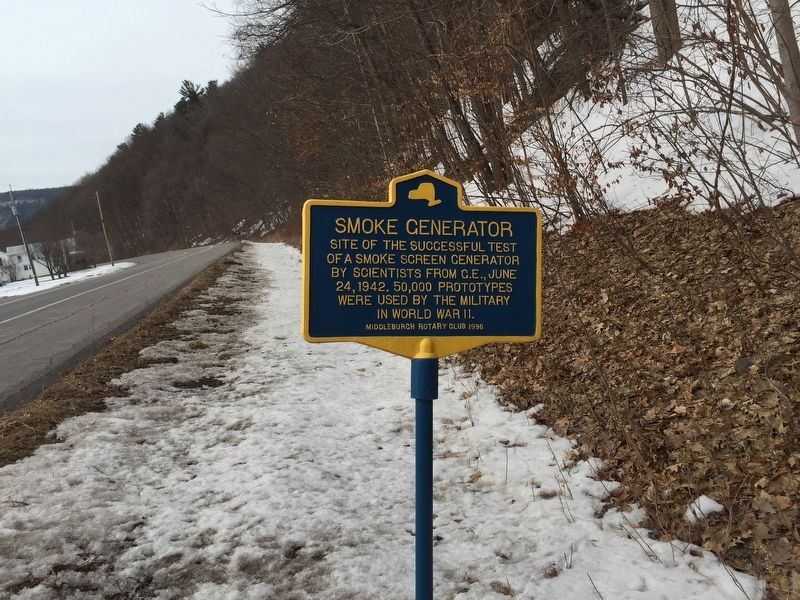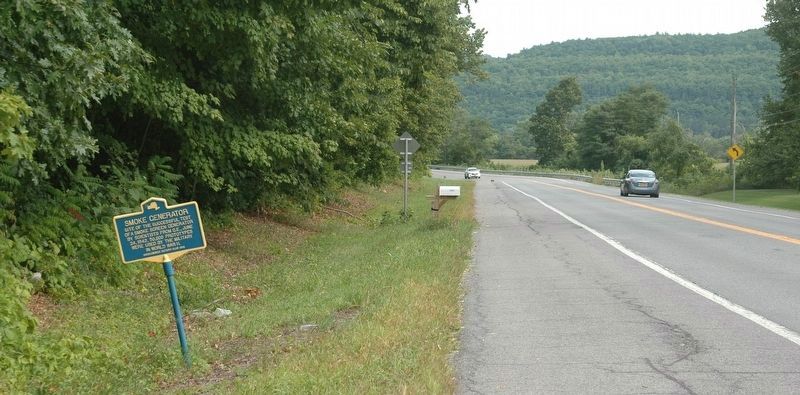Near Middleburgh in Schoharie County, New York — The American Northeast (Mid-Atlantic)
Smoke Generator
Erected 1996 by Middleburgh Rotary Club.
Topics and series. This historical marker is listed in these topic lists: Science & Medicine • War, World II. In addition, it is included in the Rotary International series list. A significant historical date for this entry is June 24, 1942.
Location. 42° 35.315′ N, 74° 21.542′ W. Marker is near Middleburgh, New York, in Schoharie County. Marker is on New York State Route 30 when traveling east. Touch for map. Marker is in this post office area: Middleburgh NY 12122, United States of America. Touch for directions.
Other nearby markers. At least 8 other markers are within 2 miles of this marker, measured as the crow flies. Vroman's Land (about 400 feet away, measured in a direct line); Indian Village (approx. 0.3 miles away); Timothy Murphy (approx. 1.2 miles away); Weiser's Dorf (approx. 1.4 miles away); 1st Reformed Church (approx. 1.6 miles away); Site of Middle Fort (approx. 1.6 miles away); a different marker also named Site of Middle Fort (approx. 1.6 miles away); The Upper Fort 1777 (approx. 1.7 miles away). Touch for a list and map of all markers in Middleburgh.
Regarding Smoke Generator. The US Army was worried that Germans were developing a poisonous smoke that their current masks couldn't filter out. The Army asked GE to develop a better filter for the masks to block the smoke. To evaluate the mask's effectiveness, Irving Langmuir needed to generate a stable smoke of known sizes and small enough to be difficult to filter. They solved this problem by August 1941.
Meanwhile, English bomber pilots were reporting German use of smoke screens to obscure industrial targets. The War Department asked if a similar generator could be built for Allied use. The optimum size of a smoke particle is 0.6 micromillimeters, and Langmuir was generating stable smoke (on a small scale) of 0.5 micromillimeters. He and his assistant Vincent Schaefer had to scale up the amount of smoke they could generate. Using a combination of theoretical and empirical methods, they succeeded. Having hiked extensively in the Schoharie Valley, they were familiar with its high ridges bounding a flat valley. Langmuir invited the Army officials to a demonstration on June 24, 1942 at dawn at this location.
The test was successful, and filled the entire valley with smoke. The “fog” broke up an hour later after the wind dispersed it.
Langmuir used the results to pursue research into cloud seeding. That research was inconclusive, with Langmuir claiming enormous results arising from extremely small amounts of material. The results were never confirmed- a result that should be heeded by today’s reseachers in health and the environment.
See P. Coffey, Catherals of Science Oxford University Press, Oxford, 2008: p. 283-284
Credits. This page was last revised on September 12, 2020. It was originally submitted on February 23, 2019, by Steve Stoessel of Niskayuna, New York. This page has been viewed 472 times since then and 44 times this year. Last updated on February 23, 2019, by Steve Stoessel of Niskayuna, New York. Photos: 1. submitted on September 8, 2020, by Howard C. Ohlhous of Duanesburg, New York. 2. submitted on February 23, 2019, by Steve Stoessel of Niskayuna, New York. 3. submitted on September 8, 2020, by Howard C. Ohlhous of Duanesburg, New York. • Andrew Ruppenstein was the editor who published this page.


